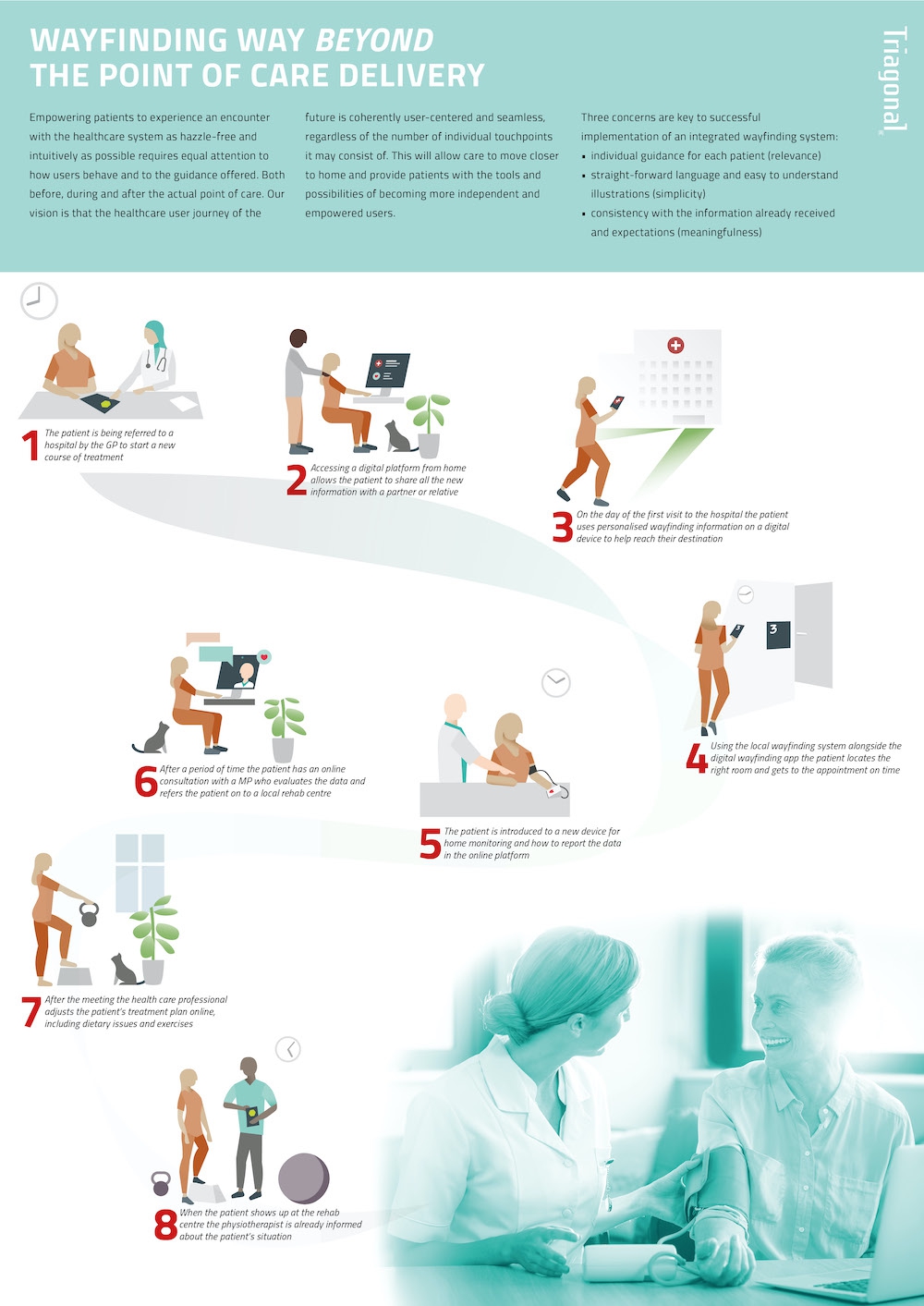Healthcare / Quality improvement
European Healthcare Design 2020
Wayfinding way beyond the point of care delivery
By Steinar Valade-Amland, Peter Donner and Louise H Kristiansen | 12 Oct 2020 | 0
In the search for new narratives that extend the notion of care beyond the point of delivery and beyond current levels of inclusiveness, designing for young and old does not suffice; humans cannot be defined by age only. We need to conceive solutions for diversity encompassing gender and ethnicity, capabilities and impairments, social background and culture.
Abstract
Including – but not limited to – all the above demands adherence to the principles behind “design for all”. With the needs of specific groups in mind, we must ensure that the end result benefits all. Ageing and certain medical conditions may entail reduced endurance or strength, or reduced sense of balance, but perception-related conditions like colour-blindness, severe dyslexia, memory loss, and not speaking the native language might be just as big barriers to navigation. Stress related to a forthcoming medical examination can severely reduce someone’s ability to orientate themselves in complex, unusual, and often perceived as intimidating, environments such as hospitals.
Designing for diversity requires a profound understanding of all implications of the product or service that we’re creating, and a diversity of means. Different users have different ways of interpreting the environment and finding their way; from written signs, maps and pictograms to establishing recognisable visual or spatial patterns. Most measures that will benefit people with specific needs also benefit the bulk of users; these include sufficient lighting on signs and maps, careful choice of colours and typefaces, and paying attention to optimal placement and size of signs and maps.
We question whether current wayfinding systems are sufficient to truly empower users, or whether we need to take a radically different point of departure looking forward. Perhaps it takes a fundamentally different model to place the accommodation of user needs at the centre of innovation and change. We need to extend the notion of care beyond delivery, and focus on whole-system thinking and environments. Such a perspective would better allow patients to care for themselves, empower patients, and contribute to moving care closer to home, independent living and sustainable systems that foster healthy communities.
Organisations involved

